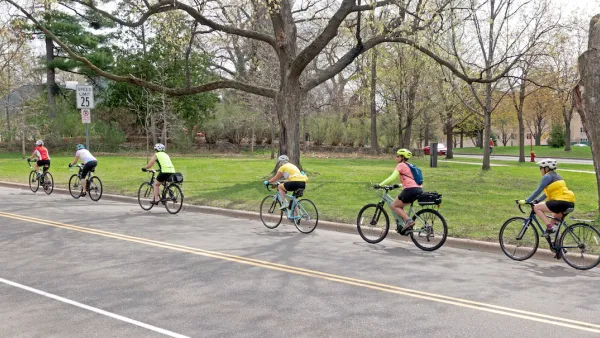Homeless and working class riders won't have the shelter and mobility offered by Green Line trains in the Twin Cities, as Metro Transit cuts overnight service.

Janet Moore reports on service changes on the Green Line of Metro Transit in Minneapolis, designed for the purposes of system maintenance but also having the effect of scattering homeless populations. The service changes cut overnight service, using shuttles to replace light rail Sunday through Thursday from 2 am to 4 am.
According to Moore, the Metro Transit Police Department's Homeless Action Team, Ramsey County and St. Paul law enforcement, and social service groups have been on hand following the service change to offer access to shelters.
"The number of homeless people using light-rail trains as shelter largely depends on the weather and tends to surge as the temperature dips. One count taken Jan. 23 by Minneapolis-based St. Stephen's Human Services found 431 people seeking shelter on trains and at transit stations," reports Moore.
According to an article by Angie Schmitt for Streetsblog USA, the effort to scatter homelessness will also affect "working class riders who just want to get home." Schmitt also notes that the line "is clearly a crucial causeway for workers, families, students, as well as the homeless especially during the Twin Cities’s [sic] notorious cold snaps." Schmitt suggests that the service changes are designed deliberately to scatter homeless populations.
FULL STORY: New Green Line light rail schedule displaces homeless riders

National Parks Layoffs Will Cause Communities to Lose Billions
Thousands of essential park workers were laid off this week, just before the busy spring break season.

Retro-silient?: America’s First “Eco-burb,” The Woodlands Turns 50
A master-planned community north of Houston offers lessons on green infrastructure and resilient design, but falls short of its founder’s lofty affordability and walkability goals.

Delivering for America Plan Will Downgrade Mail Service in at Least 49.5 Percent of Zip Codes
Republican and Democrat lawmakers criticize the plan for its disproportionate negative impact on rural communities.

Test News Post 1
This is a summary

Test News Headline 46
Test for the image on the front page.

Balancing Bombs and Butterflies: How the National Guard Protects a Rare Species
The National Guard at Fort Indiantown Gap uses GIS technology and land management strategies to balance military training with conservation efforts, ensuring the survival of the rare eastern regal fritillary butterfly.
Urban Design for Planners 1: Software Tools
This six-course series explores essential urban design concepts using open source software and equips planners with the tools they need to participate fully in the urban design process.
Planning for Universal Design
Learn the tools for implementing Universal Design in planning regulations.
EMC Planning Group, Inc.
Planetizen
Planetizen
Mpact (formerly Rail~Volution)
Great Falls Development Authority, Inc.
HUDs Office of Policy Development and Research
NYU Wagner Graduate School of Public Service





























